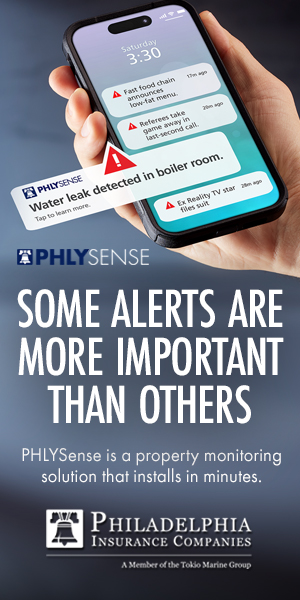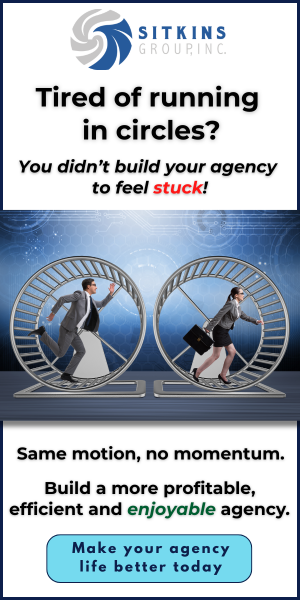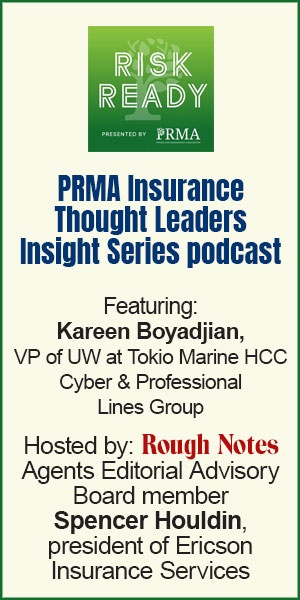Building phase-based strategies and processes can minimize the claims impact on a business and help drive the best outcome
I’ve had the privilege of working in the insurance industry for almost 40 years. Throughout that time, I’ve experienced many claims. When claims occur, I always try to keep things in perspective, realizing that serious injury and loss of life are the most devastating claims.
One of the worst claims I’ve ever handled involved a young man on a construction site, working a summer job as a steel rigger, who was crushed by a steel beam. I’ll never forget the voicemail I got from the human resources manager. It was very emotional for everyone, from the co-worker working with him to the crane operator who saw it happen. The owner of the company told me he never again wanted to have to call the mother of an employee to tell her that her son died on his job.
I’ve observed that every claim has three phases: before the claim, during the claim, and after the claim. I believe each phase requires a different strategy and process to minimize the impact on the business and to achieve the best outcome. As risk advisors, we owe it to our clients to turn their attention to the first phase before a claim happens. The best claim is one that never occurred; that’s why we always aim for avoidance. The second best claim is one that didn’t get bigger than it should have gotten.
We all know claims do happen, so we need to get involved quickly by offering assistance and counsel. We need to remember that our clients are not experts when it comes to their claims. It’s like applying for a mortgage; most people don’t do enough of them to get good at it. They rely on us to hold their hand through the process, and to advise them and support them emotionally during what is often a very tough time. If you have ever talked to a business owner after an employee has died on the job, you know what I mean.
Before
Risk management has become the buzzword in our industry, and it’s up to us to determine whether it’s just talk or if it’s part of a real process. We can do that by asking our clients questions like, “What did your team discuss at your last safety committee meeting?” If the response is, “We don’t have a safety committee,” or, “We’re so busy we haven’t had time to meet,” then we know there is an opportunity to help the client avoid claims and improve its results. We could ask, “What are you currently doing to help your employees stay healthy and safe at home and work?” If the client says, “Nothing” or “What do you mean?” we have an opportunity to help them do that.
Phase one is all about being proactive instead of reactive. An agent who is committed to helping his or her clients manage their risk should focus the majority of attention on phase one.
During
Phase two is what happens during the claim. We asking the client questions like, “What happens when you have a worker get hurt?” If the client says, “We fill in a claim form and email it to our insurance company,” recognize that there is an opportunity to improve the process and improve results.
A study of workers compensation claims in the U.S. by the Insurance Research Council points to the substantial benefits to be gained by reducing the amount of time that elapses from the date of accident/injury to first contact by the adjuster, the employer, or a primary medical provider. One study of workers compensation claims reported average savings of $3,500 per claim by decreasing the time between the date of loss and first contact from 16 to 10 days.
“Clients are not experts when it comes to their claims. They rely on us to hold their hand through the process, and to advise them and support them emotionally during what is often a very tough time.”
As agents and risk managers, we need to prepare our clients when a claim occurs, because things often move too quickly to do this after a loss. It’s imperative to advise our clients to communicate with their employees about the importance of reporting incidents immediately. Coaching them about OSHA reporting and recording before something happens can help them avoid fines and penalties and save time.
After
Phase three of a claim is after it happens. This step requires using a strong follow-up strategy both with your client and the insurance carrier. A quick phone call to a client during this phase will be appreciated and will give you an opportunity to see if the carrier is providing the customer service you are expecting.
Claims adjusters are busy managing hundreds of claims at one time. It’s important to check with them to see how things are going and see if there is anything you do to help. Approach the adjuster in a courteous, professional manner, as too often the agent community treats them poorly. Remember the saying “You catch more flies with honey than with vinegar”? That definitely applies here.
Last summer I took my wife, daughter, and three granddaughters to Chicago for an American Doll weekend. I made a reservation for two double beds and a rollaway. When we got to the hotel, I was informed that all they had was a room with one double bed. I pointed to my family and said, “Seriously? I don’t think that is going to work.”
The desk clerk went to talk to her manager, came back, and said they had a room they thought we would like. We went up to the room and entered the presidential suite with two bedrooms, a large living room, and a kitchen. My eight-year-old granddaughter smiled and said, “Papa, I know how you got us this room. You were kind but firm.”
I think this is an excellent way to communicate with our carriers and adjusters because everyone deserves that kind but firm approach.
A loss can be highly emotional for a client. He or she may have lost valuable property or even a close friend and coworker. An employee may have injured or killed someone in an accident. He or she may have watched a life’s work go up in smoke. Many agents are hands off when it comes to claims; I think a claim is an excellent opportunity to show your clients that you care, and by doing so solidify the relationship. Helping clients manage their claims will make them clients for life.
The author
Randy Boss is a Certified Risk Architect at Ottawa Kent in Jenison, Michigan. As a Risk Architect, he designs, builds, and implements risk management and insurance plans for middle market companies in the areas of human resources, property/casualty, and benefits. He has 39 years’ experience and has been at Ottawa Kent for 34 years. He is the co-founder of OSHAlogs.com, an OSHA compliance and injury management platform. Randy can be reached at rboss@ottawakent.com.





